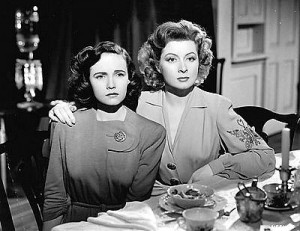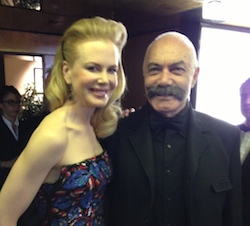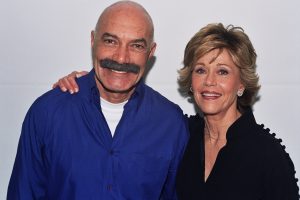 President Franklin D. Roosevelt was so impressed with the film that he requested the hasty release of the schmaltzy and patriotic “Mrs. Miniver.” Later, the President had the vicar’s lofty speech at the end of the film printed in leaflet form and dropped by airplanes over Nazi-Occupied Europe.
President Franklin D. Roosevelt was so impressed with the film that he requested the hasty release of the schmaltzy and patriotic “Mrs. Miniver.” Later, the President had the vicar’s lofty speech at the end of the film printed in leaflet form and dropped by airplanes over Nazi-Occupied Europe.
However, the reaction of playwright Lillian Hellman, who was friends with the director, seems more reliable. Upon seeing the film, she told William Wyler, “Willie, this is such a piece of crap.”
Based on a book by Jan Struther, adapted to the screen by four scribes (Arthur Wimperis, George Froeschel, James Hilton, and Claudine West), the film, a portrait of an English family during the Second World War, was a typically middlebrow MGM propaganda, a moral booster that reaffirmed the ideals of human suffering and fortitude. Needless to say, the picture represented a very Hollywood version of an English ordinary family.
 At the center of the story is an “ordinary housewife” (played by the stately and elegant Greer Garson, who won the Oscar), married to an architect (Walter Pidegon) who always buys new cars the family cannot afford. Mrs. Miniver is the proud mother of three children, one elder and two young ones. The movie was meant to symbolize the gallantry and courage of the British housewife during the Blitz.
At the center of the story is an “ordinary housewife” (played by the stately and elegant Greer Garson, who won the Oscar), married to an architect (Walter Pidegon) who always buys new cars the family cannot afford. Mrs. Miniver is the proud mother of three children, one elder and two young ones. The movie was meant to symbolize the gallantry and courage of the British housewife during the Blitz.
Mrs. Miniver’ss unconquerable spirit in the face of war was meant to inspire other (American) housewives. By concentrating on one presumably “typical” family, “Mrs. Miniver” was meant to be a universal portrait. Though Garson is supposed to be a “plain and ordinary” woman, she is always well-dressed, wearing expensive hats, and courteous and controlled in every crisis she faces.
 The movie contains a number of touching scenes, such as the evacuation of Dunkerque and the harrowing night the family spends in a bomb shelter, but it loses the little credibility it has in a scene in which Mrs. Miniver encounters a downed German pilot she had captured.
The movie contains a number of touching scenes, such as the evacuation of Dunkerque and the harrowing night the family spends in a bomb shelter, but it loses the little credibility it has in a scene in which Mrs. Miniver encounters a downed German pilot she had captured.
Wyler’s direction is reliably skillful but impersonal, lacking the strength and depth he would show in his 1946 Oscar-winning film, “The Best Years of Our Lives.”
Oscar Context
Receiving the largest (12) number of nominations in 1942, “Mrs. Miniver” swept most of the major Oscars, including Picture, Director, Actress, Supporting Actress (Teresa Wright), Screenplay (George Froeschel, James Hilton, Claudine West, and Arthur Wimperis), and Black-and-White Cinematography (Joseph Ruttenberg).
Cast
Greer Garson as Mrs. Kay Miniver
Walter Pidgeon as Clem Miniver
Teresa Wright as Carol Beldon
Dame May Whitty as Lady Beldon
Reginald Owen as Foley
Henry Travers as James Ballard
Richard Ney as Vin Miniver
Henry Wilcoxon as Vicar
Christopher Severn as Toby Miniver
Brenda Forbes as Gladys, the housemaid
Clare Sandars as Judy Miniver
Marie De Becker as Ada, the cook
Helmut Dantine as German Flyer
John Abbott as Fred
Connie Leon as Simpson
Rhys Williams as Horace
David Clyde as Carruthers










